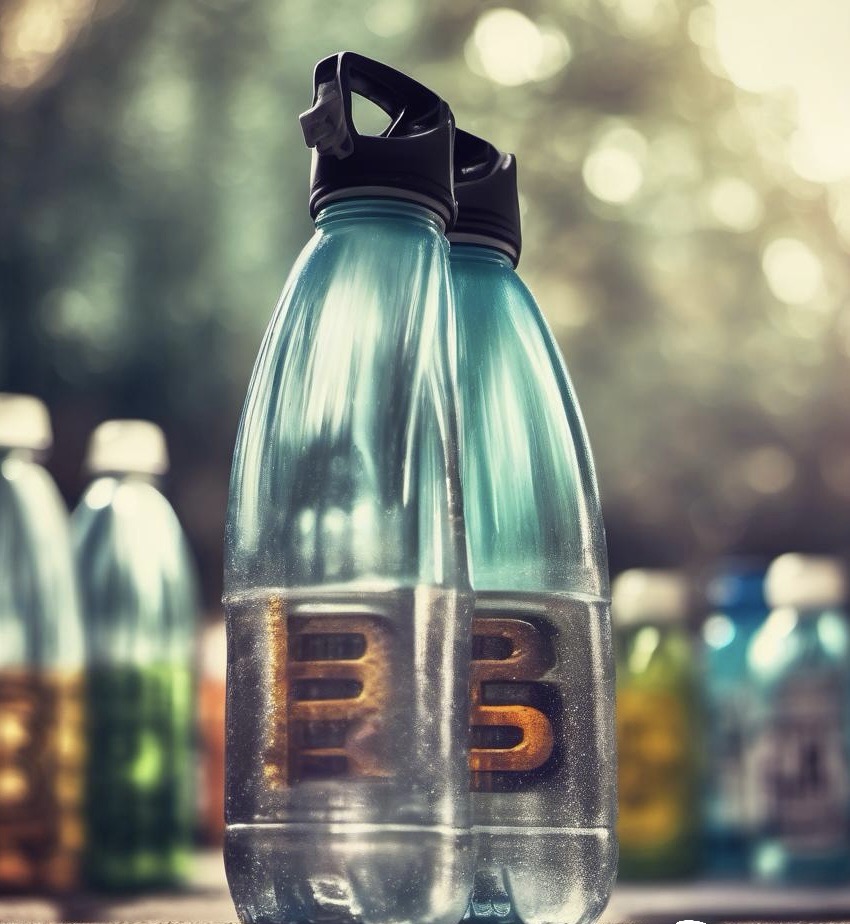Using a reusable water bottle is more than just a tiny adjustment to your daily habits; it’s a significant step towards reducing plastic waste and fostering a healthier environment. Unfortunately, BPAs may be linked to a variety of health issues, including reproductive problems, heart disease, and certain types of cancer. In this article, we will discuss ways to reduce BPA exposure and prevent health issues.

Doing a good thing
Carrying water in a reusable bottle helps decrease plastic waste in landfills and oceans while conserving natural resources and energy. This simple act can help you stay hydrated throughout the day, providing a convenient and eco-friendly way to carry water wherever you go. Opting for a reusable water bottle is cost-effective and sustainable, making a substantial difference in protecting the environment and safeguarding our planet for future generations.
As research on the risks of BPA continues, it’s crucial to stay informed and take precautions to minimize exposure to this chemical. Many people are already choosing to avoid certain plastic products and opting for BPA-free alternatives, which can significantly reduce their exposure to this potentially harmful chemical.
BPA stands for bisphenol A, a chemical used to make certain types of plastic. It’s commonly found in many everyday products, such as water bottles, food containers, and toys. But did you know that BPA exposure has been linked to many health problems, such as diabetes, obesity, and heart disease? There are ways to reduce your exposure to BPA. If you’re interested, I can share some tips with you.
How does BPA get into our bodies?
Bisphenol A (BPA) in our bodies is attributed to exposure to various chemical sources, including food and beverage containers, thermal paper receipts, and dental materials. The chemical leaches into these products and is then ingested, absorbed through the skin, or inhaled, leading to its accumulation in the human body. Once inside the body, it undergoes metabolic reactions that form metabolites, which can impact various biological processes.
What are the health risks associated with BPA?
Studies have shown that BPA can mimic the effects of estrogen in the body and disrupt the endocrine system, potentially leading to a variety of health issues, including reproductive problems, developmental delays, and an increased risk of certain cancers. Additionally, BPA has been linked to cardiovascular disease, diabetes, and obesity. As a result, many countries have banned the use of BPA in certain products, such as baby bottles and sippy cups, and have implemented regulations to limit exposure to this chemical.
Tips for choosing a safe reusable water bottle?
Safety should always be a top priority when choosing a reusable water bottle. Here are some tips to help you select a water bottle that is not only safe for you to use but also good for the environment:
1. Look for bottles made from BPA-free materials: Bisphenol A (BPA) is a chemical compound that can be found in some plastics and has been linked to health concerns. To avoid potential risks, choose a water bottle labeled as BPA-free.
2. Consider the type of material used: Reusable water bottles can be made from various materials, including plastic, stainless steel, glass, and copper. Each material has pros and cons, so it’s essential to consider what will work best for your needs.
3. Check for a good seal: A water bottle with a good seal will prevent leaks and spills, which can be both messy and wasteful. Look for a bottle with a secure lid that is easy to open and close.
4. Pay attention to cleaning instructions: Keeping your water bottle clean is essential for safety and hygiene reasons. Some materials are easier to clean than others, so choose a bottle that can be easily cleaned and maintained. In addition, it is vital to clean reusable water bottles regularly to prevent the growth of bacteria, which can cause infections and other health problems. Using a dishwasher or washing the water bottle with soap and hot water can help keep it clean and hygienic.
5. Another essential consideration is to choose the right size and shape of the water bottle that suits your needs and lifestyle. For example, if you’re on the go frequently, it’s best to choose a lightweight and compact water bottle that’s easy to carry. A giant water bottle might be more suitable if you prefer to drink more water at once. By adhering to these tips, you can select a reusable water bottle that prioritizes safety, durability, and eco-friendliness.
Pros and cons?
There are several materials for a reusable water bottle, each with advantages and disadvantages. The most common materials used to make reusable water bottles include plastic, stainless steel, glass, aluminum, and copper.
Plastic water bottles are usually lightweight and affordable, but there may be more durable options that can harm the environment. Stainless steel water bottles are sturdy and long-lasting but can be heavy and unsuitable for hot liquids. Glass water bottles are an excellent option for those who want to avoid plastic. Still, they can be fragile and break easily. Copper water bottles are known for their health benefits but can be expensive and require special maintenance. Ultimately, your decision on the material for your reusable water bottle will be influenced by what suits your preferences and lifestyle best. Taking the time to carefully weigh each material’s pros and cons is crucial before making your choice to ensure you pick a bottle that aligns perfectly with your needs.
Conclusion
This text highlights the importance of using reusable water bottles to promote a healthier environment by reducing plastic waste and conserving natural resources and energy. It discusses BPA, a chemical used to make certain types of plastic, which has been linked to a variety of health problems, such as diabetes, obesity, and heart disease. Tips for choosing a safe, reusable water bottle include looking for bottles made from BPA-free materials, considering the material used, checking for a good seal, and paying attention to cleaning instructions.
Choosing reusable water bottles wisely and being aware of possible health hazards is crucial. You can guarantee that you stay safe and hydrated while safeguarding the environment by being aware of the potential health hazards of reusable water bottles and making wise decisions. It is crucial to consider the bottle’s dimensions and form to ensure it complements your needs and way of life. Furthermore, to ensure the longevity of your reusable water bottle and help avoid bacterial growth, clean it periodically and maintain it appropriately.
Other articles you may like:
HOW TO STAY HYDRATED IN EXTREME HEAT WITH WATERMELON SPRITZER

